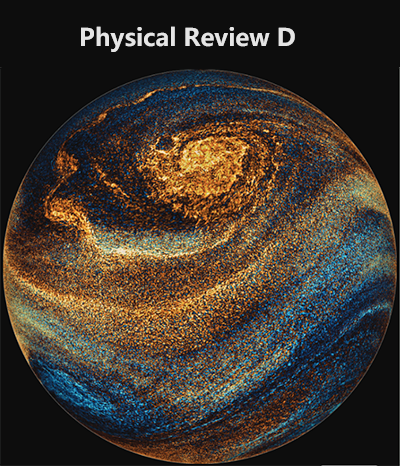Gravitational energy problem and the energy of photons
IF 5.3
2区 物理与天体物理
Q1 ASTRONOMY & ASTROPHYSICS
引用次数: 0
Abstract
The lack of a well-established solution for the gravitational energy problem might be one of the reasons why a clear road to quantum gravity does not exist. In this paper, the gravitational energy is studied in detail with the help of the teleparallel approach that is equivalent to general relativity. This approach is applied to the solutions of the Einstein-Maxwell equations known as $pp$-wave spacetimes. The quantization of the electromagnetic energy is assumed and it is shown that the proper area measured by an observer must satisfy an equation for consistency. The meaning of this equation is discussed and it is argued that the spacetime geometry should become discrete once all matter fields are quantized, including the constituents of the frame; it is shown that for a harmonic oscillation with wavelength $\lambda_0$, the area and the volume take the form $A=4(N+1/2)l_p^2/n$ and $V=2(N+1/2)l_p^2\lambda_0$, where $N$ is the number of photons, $l_p$ the Planck length, and $n$ is a natural number associated with the length along the $z$-axis of a box with cross-sectional area $A$. The localization of the gravitational energy problem is also discussed. The stress-energy tensors for the gravitational and electromagnetic fields are decomposed into energy density, pressures and heat flow. The resultant expressions are consistent with the properties of the fields, thus indicating that one can have a well-defined energy density for the gravitational field regardless of the principle of equivalence.引力能量问题与光子能量
引力能问题缺乏一个公认的解决方案,这可能是为什么不存在通往量子引力的明确道路的原因之一。本文借助于广义相对论的遥星方法对引力能进行了详细的研究。这种方法被应用于被称为$pp$波时空的爱因斯坦-麦克斯韦方程组的解。假设电磁能的量子化,并表明观测者测量的适当面积必须满足一致性方程。讨论了这个方程的含义,并认为一旦所有物质场都被量化,包括帧的组成部分,时空几何就应该变得离散;结果表明,对于波长为$\lambda_0$的谐波振荡,面积和体积的形式分别为$a=4(N+1/2)l_p^2/N$和$V=2(N+1/2l_p^2\lambda_0$,其中$N$是光子数,$l_p$是普朗克长度,$N$是与横截面积为$a$的盒子沿$z$轴的长度相关的自然数。还讨论了引力能问题的局部化问题。引力场和电磁场的应力能量张量被分解为能量密度、压力和热流。所得表达式与场的性质一致,因此表明无论等效原理如何,引力场都可以具有明确定义的能量密度。
本文章由计算机程序翻译,如有差异,请以英文原文为准。
求助全文
约1分钟内获得全文
求助全文
来源期刊

Physical Review D
ASTRONOMY & ASTROPHYSICSPHYSICS, PARTICLES-PHYSICS, PARTICLES & FIELDS
CiteScore
9.30
自引率
36.00%
发文量
3456
期刊介绍:
Physical Review D (PRD) is a leading journal in elementary particle physics, field theory, gravitation, and cosmology and is one of the top-cited journals in high-energy physics.
PRD covers experimental and theoretical results in all aspects of particle physics, field theory, gravitation and cosmology, including:
Particle physics experiments,
Electroweak interactions,
Strong interactions,
Lattice field theories, lattice QCD,
Beyond the standard model physics,
Phenomenological aspects of field theory, general methods,
Gravity, cosmology, cosmic rays,
Astrophysics and astroparticle physics,
General relativity,
Formal aspects of field theory, field theory in curved space,
String theory, quantum gravity, gauge/gravity duality.
 求助内容:
求助内容: 应助结果提醒方式:
应助结果提醒方式:


